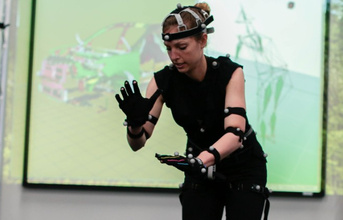
Since 2003, Ford has reduced the injury rate by 70 percent for its more than 50,000 "industrial athletes" in the U.S., and many more around the world, through new ergonomics technology, lift-assist devices, workstation redesign and data-driven process changes.
"We refer to our assembly line employees as ‘industrial athletes', due to the physical nature of the job," said Allison Stephens, technical leader for assembly ergonomics at Ford. "We have made data-driven decisions through ergonomics testing that has led to safer vehicle production processes and resulted in greater protection for our employees."
While automotive designers focus on a vehicle's look and the customer experience, Ford virtual manufacturing experts focus on two key areas - design feasibility and the safety of employees on the production line.
Two to three years in advance of a new-vehicle launch, Ford ergonomists virtually simulate the build process using both human and virtual test subjects to assess the physical labor needed to build a vehicle. In an effort to reduce and help prevent employee fatigue, strain and injury, the data collected is used to guide engineering solutions prior to implementing tasks on the production floor.
Core virtual manufacturing technologies
On average, Ford ergonomists complete more than 900 virtual assembly task assessments per new-vehicle launch, centered on three core technologies - full-body motion capture, 3D printing and immersive virtual reality. Each provides critical data used to evaluate the overall safety of the assembly process for employees, while maintaining high vehicle quality for customers.
Virtual manufacturing experts at Ford use the following tools:
• Full-body motion capture provides data on how an employee uses his or her body to move and complete tasks. Through more than 52 motion-capture markers placed on an employee's arms, back, legs and torso, ergonomists can record more than 5,000 data points to evaluate muscle strength and weakness, joint strain and body imbalance. Similar technology is used across professional sports to improve athletes' techniques and help them avoid injury
Continued to next page
